From the Archives: December 1994
FEATURE: More Than 1200 Attend INTER-NOISE 94
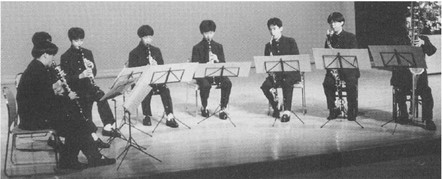
INTER-NOISE 94, the 1994 International Congress on Noise Control Engineering was the largest INTER-NOISE Congress in recent history, and one with an outstanding technical program. In accordance with the theme, Noise – Quantity and Qual ity, attention was paid not only to the level of noise, but those other attributes which affect listener’s reactions, broadly defined as sound quality.
INTER-NOISE 94 opened with some music by a very talented group of eight junior high-school and high-school students from the Setagaya Gakuen School who played Maria Isabella by Berrio and Camaval by Schumann.
Professor Toshio Sone, the General Chairman of INTER-NOISE 94, then welcomed the INTER NOISE 94 delegates to Yokohama. He said that the delegates who attended the last INTER NOISE Congress in Japan, INTER-NOISE 75, will have a chance to learn of the administrative and technological improvements in environmental noise control in Japan during the last nineteen years.
“This Congress,” he said, “was made possible due to the support of the Environmental Agency, the local administrative agencies of the cities of Yokohama and Kawasaki, the Commemorative Association for the Japan World Exposition, a number of industrial establishments, and, of course, the International Institute of Noise Control Engineering.” He extended his gratitude to all of these institutions prior to the Congress.
The Congress President, Dr. Masaru Koyasu, welcomed the delegates to the meeting by saying that while there are a large number of noise problems still to be solved through the physical reduction of noise, one of the important subjects in noise control engineering must also be the creation of a comfortable sound environment. “Professor Namba of Osaka University in Japan,” he said, “will discuss this subject as the keynote speaker later in this plenary session.” Dr. Koyasu also said that one special feature at INTER-NOISE 94 will be the session on Instrumentation and Software, a special session of 30 papers presented by the exhibitors at the Congress. “It is worth mentioning,” he said, “that the Organizing Committee is composed of about I00 members, including several subcommittees.”
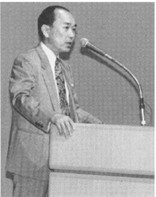
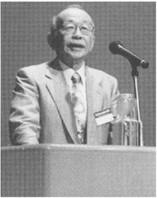
He said that all of the members have worked very hard to ensure that the Congress runs smoothly, and is a success. “I sincerely hope,” he said, “that all overseas participants enjoy their stay in Japan, not only through acquaintance with noise control technology, but also through close contact with Japanese cultures.”
Professor Sone then introduced Dr. Oosawa, Director of the Air Quality Bureau of the Environment Agency of Japan. He gave a brief summary of the importance of noise control in Japan, and the activities of government agencies in Japan.
Professor Sone then introduced the President of International INCE, Dr. William W. Lang who described some of the activities of International INCE. He announced that ACTIVE 95, the symposium to be held prior to INTER- NOISE 95, has been designated by the I-INCE Board of Directors as an International INCE Symposium, and that the Board of Directors has accepted an invitation from Hungary to organize the 1997 INTER-NOISE Congress in Budapest.
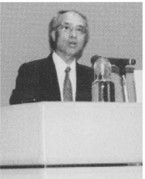
Professor Seiichiro Namha of Osaka University in Osaka, Japan gave the first distinguished lecture at INTER-NOISE 94. The title of his paper, Noise, Quantity and Quality, addressed the theme of the Congress. He began his Distinguished Lecture by redefining the quality of sound known as timbre. He suggested that the conventional definition, the “at tribute of auditory sensation in terms of which a listener can judge that two sounds similarly presented and having the same loudness and pitch are dissimilar.” He suggested that “timbre” should be employed to cover two attributes, 1) a characteristic which gives a clue to the identity of the sound source, and 2) the quality of a sound which corresponds to the affective impression which can be verbally expressed as timbre. These attributes, he suggested, should be called sound quality in noise research. He said that the main theme of his presentation is that sounds equal in loudness but different in timbre may have different effects on listeners.
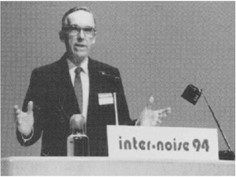
He described several studies of the cross-cultural influences on the perception of different sounds, and concluded that the perception of many sounds is different in different countries. He warned of creating artificial “soundscapes” because these environments — created with the help of loudspeakers are accepted differently in different countries. He pointed out that changing life-styles affect the perception of sounds; for example, listeners become much more critical about environmental quality when a certain degree of economic security has been achieved.
He gave several examples of remarkable reductions in noise levels achieved by progress in noise control engineering, but warned that reductions in noise level may in some cases not improve the quality of the sound, as, for example when the re duction of broadband sound eliminates masking from rumble or gear noise.
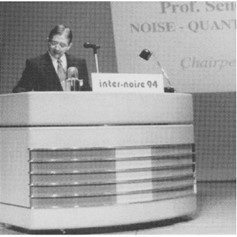
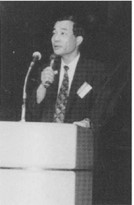
He then turned to a psychophysical approach to noise quality and suggested that noise quality can be expressed by a relatively small number of factors. He described research in terms of semantic profiles such as sharp…dull, weak…powerful, pleasing …unpleasing, etc., and gave several examples of how these profiles could be used to identify the quality of sound from several kinds of machines.
Following the plenary session, delegates broke into ten parallel sessions on a wide variety of topics. Two special presentations were the progress reports on the I-INCE working parties, a report on “Upper Limits on Noise in the Workplace” by Dr. Tony F.W. Embleton, and “Noise Emissions of Road Vehicles Effects of Regulations” presented by Dr. Ulf Sandberg. A reception for all delegates was held in the Pacifico Congress center on Monday evening.
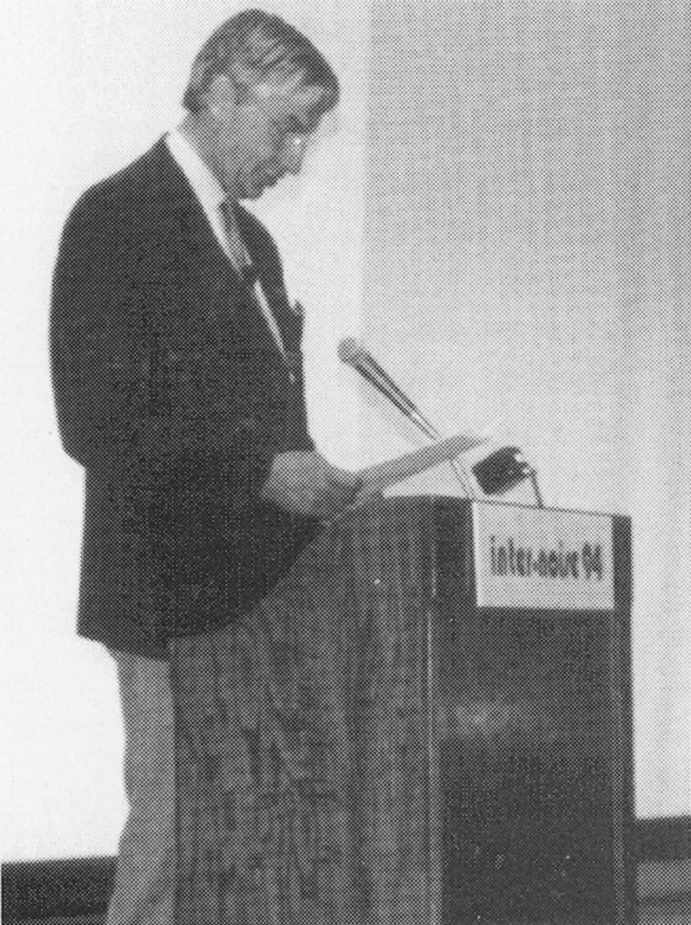
Lecture at the Congress.
The second distinguished lecture was presented by Professor Andre Cops of the Catholic University in Leuven Belgium, on Tuesday, August 30. Professor Cops serves as the Secretary-General of International INCE and as the European Editor of this magazine.
Professor Cops gave an excellent review of the Progress in Building Acoustics over the past several years. “The sound quality of indoor environments,” he said, “is, of course, very important, and an understanding of building acoustics is the key to controlling these environments.”
He pointed out that the advances in digital signal processing have made it possible to make accurate measurements of quantities other than sound pressure, and he gave several examples of techniques which may be used to study all of the details of sound radiation from complex building structures.
“Acoustic intensity and acoustic holography are two most useful tools,” he said, and he proceeded to give several examples of the use of these tools for sound transmission measurements, determination of sound transmission loss, and for examination of sound transmission through structures such as walls with windows. He reviewed techniques of acoustic holography and phonoscopy, and how these techniques can be used to understand the properties of complex sound fields.
He also reviewed the rapidly-developing field of active noise control in building acoustics, and gave examples of how loudspeakers mounted inside the cavity of a double- walled partition or inertial shakers mounted on double-wall panels can provide low frequency noise reduction.
He then turned to numerical modeling, and gave examples of how Statistical Energy Analysis, Finite Element Methods, and Boundary Element Methods can be used in building acoustics. He concluded by saying that these new measurement techniques and the availability of advanced modeling techniques have helped engineers to find cost-effective means to reduce building noise.
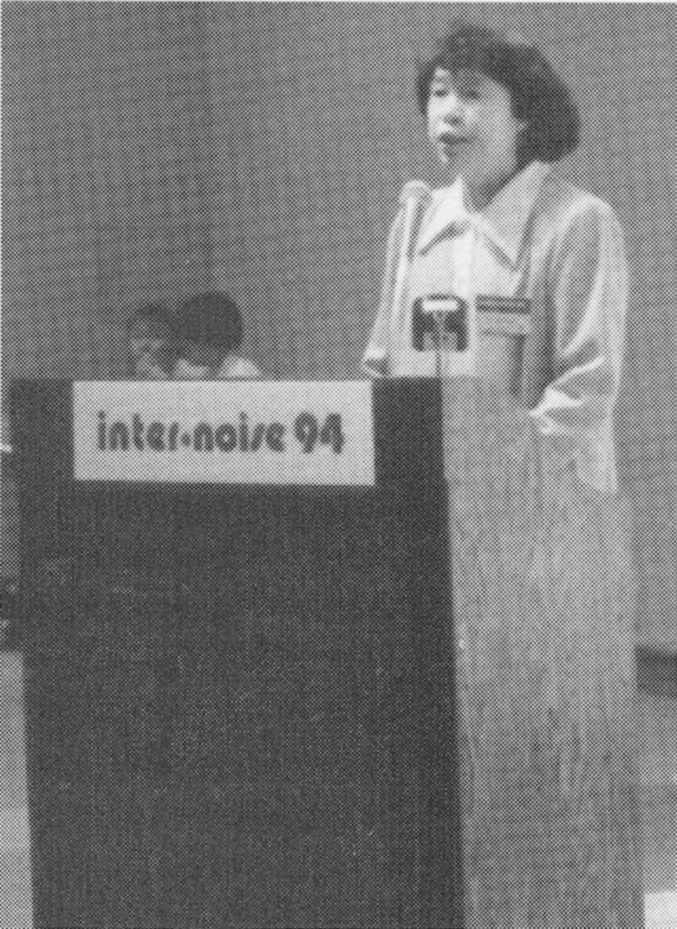
Ten parallel sessions then followed the plenary and continued throughout the day. In the evening, a
banquet and cruise on Yokohama Bay was offered,
and was very well attended.
Regulations for Community Noise was the topic of the third distinguished lecture presented on Wednesday, August 31 by Dr. Dieter Gottlob of the Federal Environmental Agency in Germany. “Noise
in many industrialized countries,” he said, “has been developing into a severe environmental problem. More than 70 percent of the citizens in Germany are annoyed by traffic noise, 50 percent by aircraft noise, and about 20 percent by industrial noise and rail traffic noise.” He estimated that the annual costs accruing from noise in Germany amount to about 26-28 billion Deutsche Marks!
He gave an excellent overview of worldwide noise regulations relative to industrial noise, road traffic noise, rail traffic noise, and aircraft noise. Using a carefully-developed series of charts, he contrasted the allowable noise limits for noise from industrial plants in fifteen different countries, and the different descriptors used, the required levels, and the effect of time of day and night on the required levels. He included corrections for both tonal components and impulsiveness in his analysis.
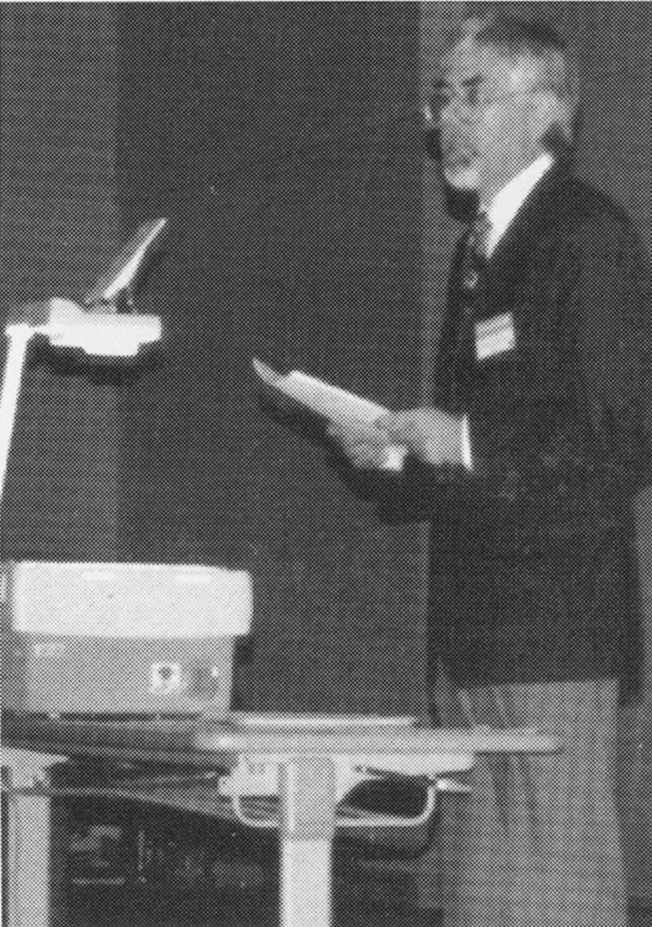
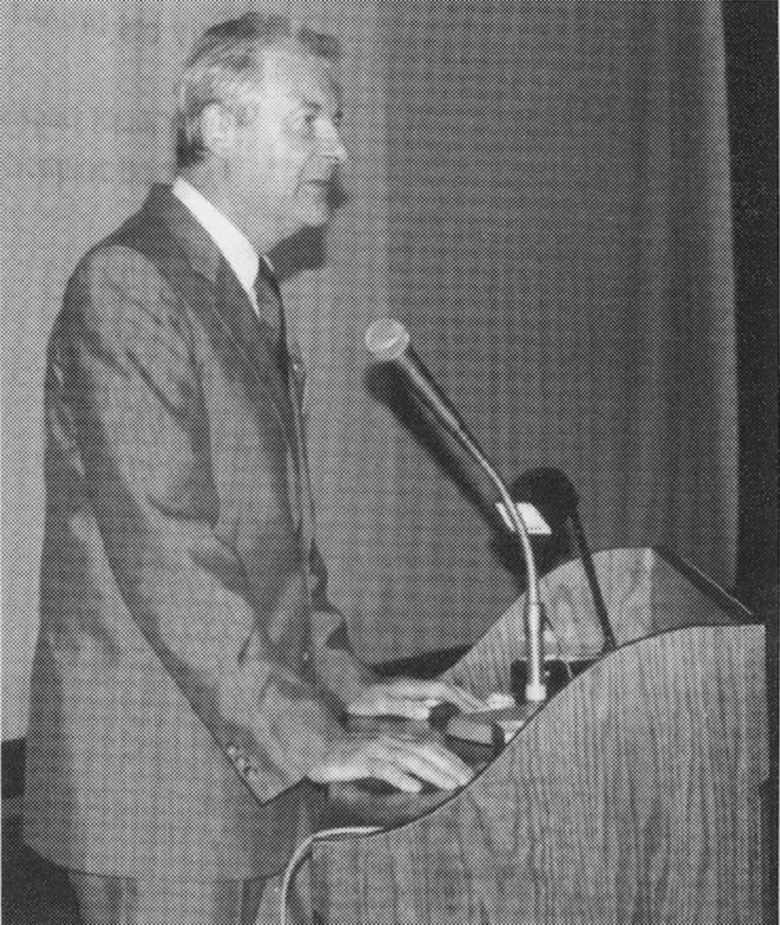
He proceeded with a similar analysis of road traffic noise regulations in fourteen countries, and listed the conditions under which the regulations apply. He continued with an explanation of railroad noise regulations in twelve countries.
He next turned to aircraft noise, and summarized the regulations in twelve countries. He presented approximate equations for describing the 24- hour equivalent A-weighted sound level in terms of the descriptors used in each country.
The fourteen page summary of his presentation in the Congress Proceedings is a carefully-referenced article which should be useful to engineers, regulators, and environmentalists who wish to compare noise regulations in their own country with those around the world.
As on previous days, ten parallel sessions were held for the rest of the day. The Congress closed on Wednesday, August 31. Following a performance of the first movement of the Italian Concerto by J.S. Bach, Dr. Masaru Koyasu began the closing ceremony by introducing the General Secretary of International INCE, Professor Andre Cops, who gave thanks to the INTER-NOISE 94 Secretariat for an outstanding job managing the congress. He thanked Professor Y6iti Suzuki from Tokohu University for his leadership of the Congress Secretariat and Dr.Ozawa, Dr. Asano, Uematsu-san, Abe-san and Harry-san for their contributions to the Congress.
Flowers were presented to two coordinators for the Congress, Tsuzuku-san and Iimura-san, and to the
secretary of the General Chairman, Yashiro-san. William W. Lang, President of International INCE, gave thanks to the entire organizing committee for INTER-NOISE 94, and a bouquet of flowers to Professor Kuwano in gratitude for her outstanding work as editor of the INTER-NOISE 94 Proceedings. Dr. Lang thanked all of the organizers again. “I don’t know any Japanese,” he said, “but Gokurosama deshita, thank you for a job very well done.”
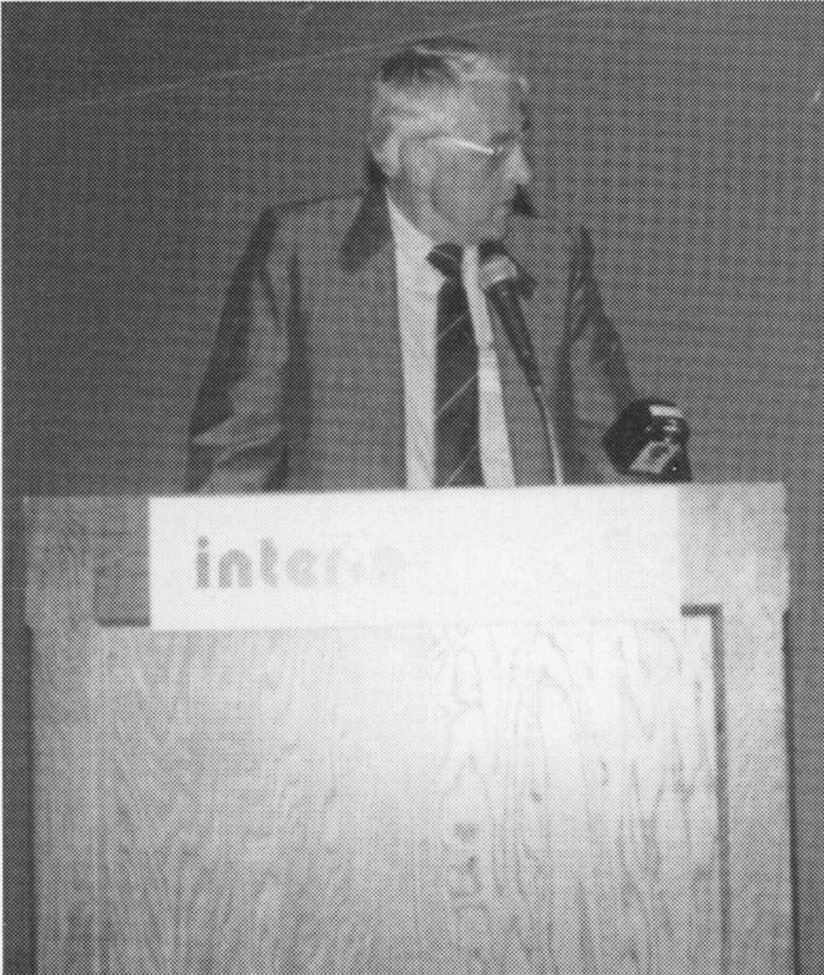
Attention then turned to the 1995 meetings sponsored by International INCE. Professors Tichy and Tachibana presented an overview of the ACTIVE 95 Symposium on active control of sound and vibration which will precede the INTER-NOISE Congress, and Alan H. Marsh invited all attendees at INTERNOISE 94 to corne to Newport Beach, California, USA next July for the INTER-NOISE 95 Congress. He showed a series slides of the venue for the Congress and views of Newport Beach.
After a second musical interlude, the 3rd movement of the Italian Concerto, Professor Yoiti Suzuki invited all attendees to have a farewell drink before leaving Yokohama. “The drinks are being sponsored by the organizers of INTER-NOISE 95,” he said, “so the wine is Inglenook, and the beer is Budweiser.”
The attendance at INTERNOISE 94 was 899 registrants from 36 countries, including 28 students. There were 222 exhibitor personnel from 44 companies, 89 accompanying persons, and 17 guests, making a total of 1227 in attendance for the three-day congress.
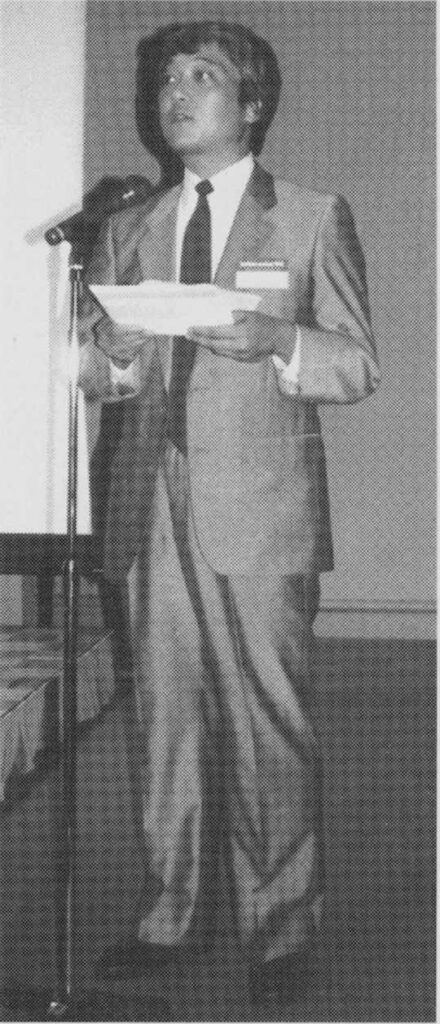
The three-volume set of proceedings contains 498 technical papers, including the text of three distinguished lectures. There were 555 Japanese registrants at the congress. The largest overseas delegation was from Korea with 49 participants. The United States, Germany, France, Australia, Sweden, United Kingdom, Italy, Denmark, China, Canada, and Russia followed with 48,34,30,23,22,20,19,16,13,12, and 11 respectively.
The three-volume set of congress proceedings is available for immediate shipment from Noise Control
Foundation, P.O. Box 2469 Arlington Branch, Poughkeepsie, NY 12603. The postpaid price is USD 180. Overseas orders to be shipped by air mail should add USD 50 for airmail postage and handling. Customers in Japan may wish to order directly from INCEl Japan or the Acoustical Society of Japan. In Japan, the price is JPY 15,000, including surface mail postage. Contact INCEl Japan, c/o Kobayasi Institute of Physical Research, 3-20-41 Higashimotomachi, Kokubunji, Tokyo 185, or the Acoustical Society of Japan, Ikeda Building, 2-7-7 Yoyogi, Shibuya-ku, Tokyo 151.
Technical Sessions at INTER-NOISE 94
Sixty-one technical sessions were held at INTER-NOISE 94. The session titles are listed below with special sessions listed in bold-faced type.
Distinguished Lectures (3)
Progress Reports of I-INCE Working Parties
Railway Noise and Vibration I
Railway Noise and Vibration II
Railway Noise and Vibration III
Aircraft and Airport Noise I
Aircraft and Airport Noise II
Prediction of Road Traffic Noise
Noise Regulations for Road Vehicles
Source Characterization in Duct Systems
Vehicle Noise
TirelRoad Noise
Machinery Noise
Flow Noise
Physical Phenomena
Noise Propagation Outdoors
Barriers
Structure-Borne Sound Sources
Structure-Borne Sound
Vibration Damping and Isolation
Noise Control in the Workplace I
Noise Control in the Workplace II
Inner Ear Function and Noise
Subjective Evaluation of Environmental Noise
Sound Quality of Machinery Noise
Subjective Response to Vibration
Sound Amenity and Soundscape
Personal Noise Exposure
Perception of Noise
Psychological Effects of Noise I
Psychological Effects of Noise II
Community Noise
Active Noise Control – Algorithms I
Active Noise Control – Algorithms II
Active Control- Vibration
Active Control – Sound Fields
Active Control- Applications I
Active Control- Applications II
Floor Impact Sound
New Methods of Measuring Sound Transmission
Sound Absorbing Materials
Sound Insulation I
Sound Insulation II
Duct Acoustics, Silencers and Mufflers
Structural Intensity Measurements I
Structural Intensity Measurements II
Sound Intensity Applications
Sound Power Determination
Noise and Communication
Signal Processing and Diagnosis I
Signal Processing and Diagnosis II
Measuring Techniques I
Measuring Techniques II
Numerical Analysis and Modeling I
Numerical Analysis and Modeling II
Numerical Analysis and Modeling III
Numerical Analysis and Modeling IV
Noise Regulation, Control, and Cost Analysis
Instrumentation and Software


